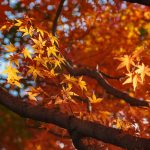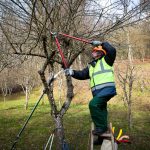Which Way Will a Tree Fall in a Storm?
Trees are one of the reasons that make living in the Pacific Northwest so desirable. Along with the environmental aspects (clean air, healthy habitat for wildlife), they also give our neighborhoods year-round natural beauty you won’t find in many other places. But we also get our share of heavy Winter weather in Oregon. The aesthetics of our trees can turn grim if you aren’t sure which way will a tree fall in a storm.
When a storm is approaching, one of the biggest concerns for homeowners is which direction a nearby tree may fall. It’s important to be aware of the potential dangers posed by falling trees in order to take appropriate safety measures. This means moving cars, taking care of any outdoor furniture, or even taking steps to remove the tree before the inevitable happens.
Which Way Will a Tree Fall in a Storm?
Fortunately, there are certain signs that can help you determine which way a tree will fall in a storm and plan accordingly. Here are a few things to look for:
- The natural lean of the tree
- Other trees nearby
- Natural weak points
- Professional examination
The natural lean of the tree
First, it’s important to assess the natural lean of the tree. Trees naturally grow toward whatever light source they can access, and their trunks develop an inclination due to this process. The bigger and more established the tree is, the easier it will be for you to spot its natural lean.
Oftentimes this will give you an indication of which way the tree is most likely to fall when impacted by heavy wind during a storm. You can also look to see if one side of the tree has more or larger branches that would drag the tree one way or the other.
Other trees nearby
Another key factor to consider is how close or far away other trees are from the tree you have concerns about. When faced with strong winds, trees tend to lean toward each other, so if there are multiple trees nearby, they could potentially act like anchors and keep each other upright.
In some cases, those other trees may lend a helping hand if the tree you’re worried about is close enough. However, if you have concerns about one of your trees falling over in a storm, you may want to act now so that it doesn’t take out additional trees.
Natural weak points
It’s also important to check for any visible damages on the trunk of your tree. This could be anything from root damage or large wounds caused by insects or animals gnawing at its bark. In some cases, this damage can lead to weakened trunks that are more susceptible to collapsing under high winds during storms.
Knowing where these weak points are located can help you determine where it’s likely that a falling branch or trunk sectioned off from your tree may land. If there are obvious structural issues (visible tree root system, large dead areas, no new growth at the top of the tree), you may want to get the tree removed sooner rather than later.
Professional examination
A certified arborist can inspect trees in greater depth and provide tailored advice on how best to protect against property damage caused by falling trees during storms. This could mean taking preventative measures such as trimming branches or addressing damaged portions of trunks ahead of time prior to storm season.
They may also suggest removing the tree entirely. Most of the time, a certified arborist will do what they can to save a tree–but when it’s time, it’s time. At least you’ll know you did what you could to save the tree and take steps to prevent it from damaging anything else.
Which Way Will a Tree Fall in a Storm? Sometimes it Doesn’t Matter
Knowing these tips and tricks related to which way a tree will fall can certainly help minimize risks. Being prepared is always the best course of action. Of course, no amount of planning can completely guarantee safety from falling trees during severe storms. Consider lightning strikes–trees can be obliterated if hit directly by these bolts of energy.
Fallen trees can often cause major damage in residential areas, from taking out a fence to taking out an entire home! If you are worried about your tree–in any season–call Inexpensive Tree Care for a consultation. We’ll perform a thorough examination of the tree and let you know the best course of action.



